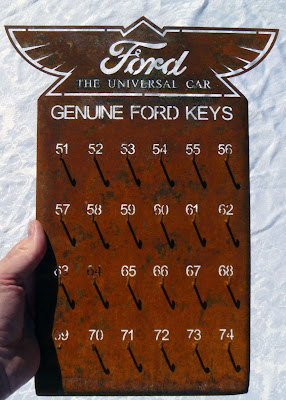Advice for the Beginning Lock Collector
If you’re just going to buy a couple of locks or keys
because they look nice then there’s nothing more for me to say. Stop reading
and continue about your business.
But if you want to start any kind of lock collection here’s
one piece of advice. Learn about what you want to collect.
Sources: Learn through books, lock collecting
associations, antique lock shows, lock museums, other lock collectors, including
their personal internet sites. A more recent resource is the Padlock Collectors
group on Facebook.
Books: The two most recent price guides today
are The Padlock Collector, 284 pages, 6th
edition, 1996, Franklin Arnall, and Poorman’s
Story & Ornamental Padlocks, 160 pages, 3rd edition, 1992, Don Stewart. Both books
are long out of print, but can still be found through various sources.
The Padlock Collector
is the most comprehensive, featuring twenty-five different categories of
padlocks. It is illustrated with black-and-white photographs, with price
listings on separate pages. This is the reference book of choice for the
serious collector.
The Poorman’s guide
covers the more common types of padlocks, and categorizes them alphabetically
by the name or image on the lock. It is illustrated with line drawings of the
locks with prices next to the drawings.
Organizations: Join a lock collecting organization. Two
organizations in the United States are the West Coast Lock Collectors
Association (WCLCA) and the American Lock Collectors Association (ACLA). Don’t
let the geographic location hold you back. Both associations publish journals
at least quarterly, with in-depth articles about collectible locks and keys.
Lock Shows: Currently there are four
different lock shows held annually in the United States where collectors from
across the country meet to buy and sell locks as well as to showcase locks from
their collections. In February the WCLCA sponsors a show in the Los Angeles
area. April features a lock show in Indianapolis, and in July a show is held in
Lancaster, Pennsylvania. The Lock Museum of Terryville, Connecticut hosts a
show in Terryville every year in October.
Try to fit one of the lock shows into your vacation plans.
You’ll be glad you did.
Happy hunting.

